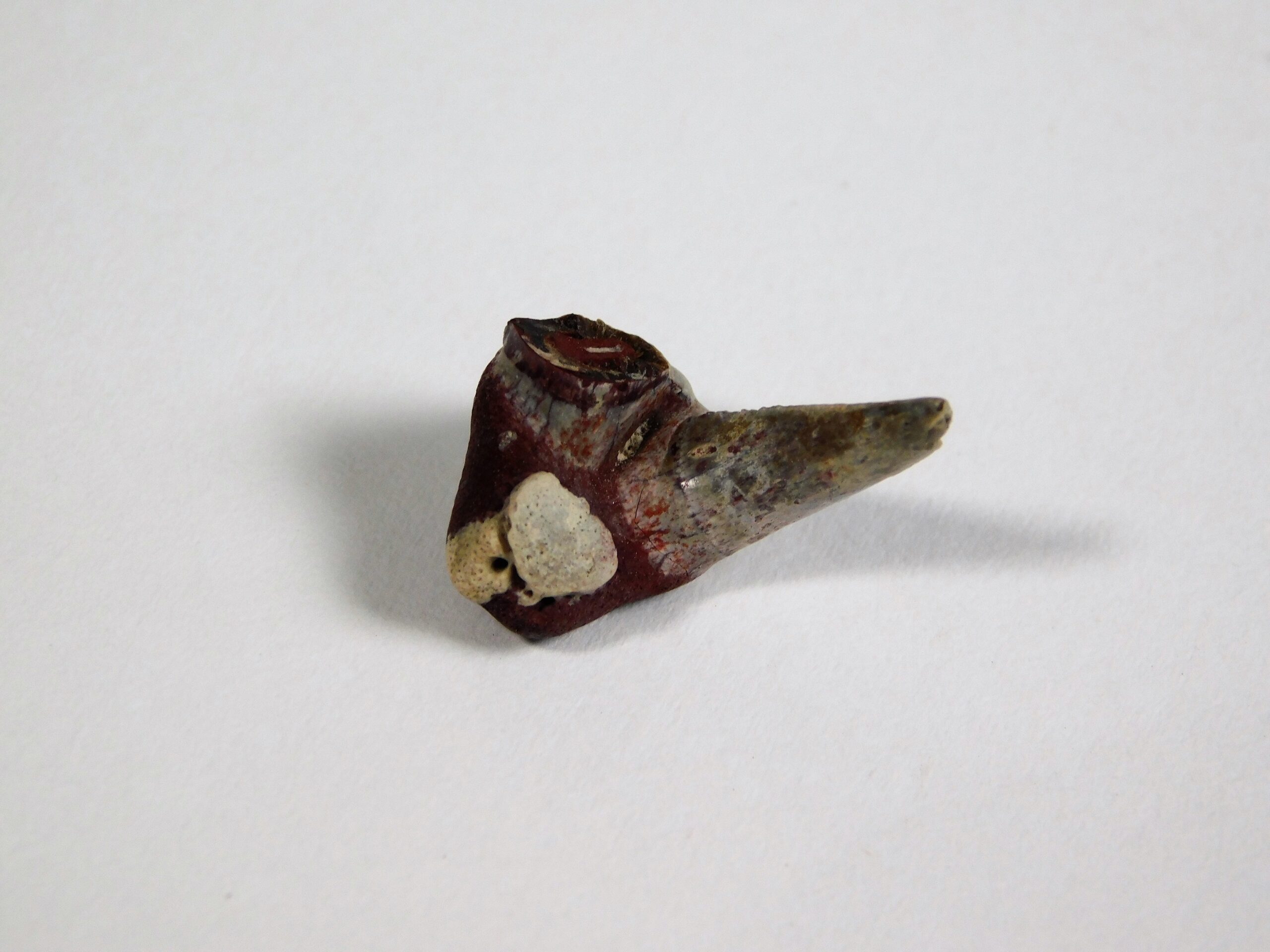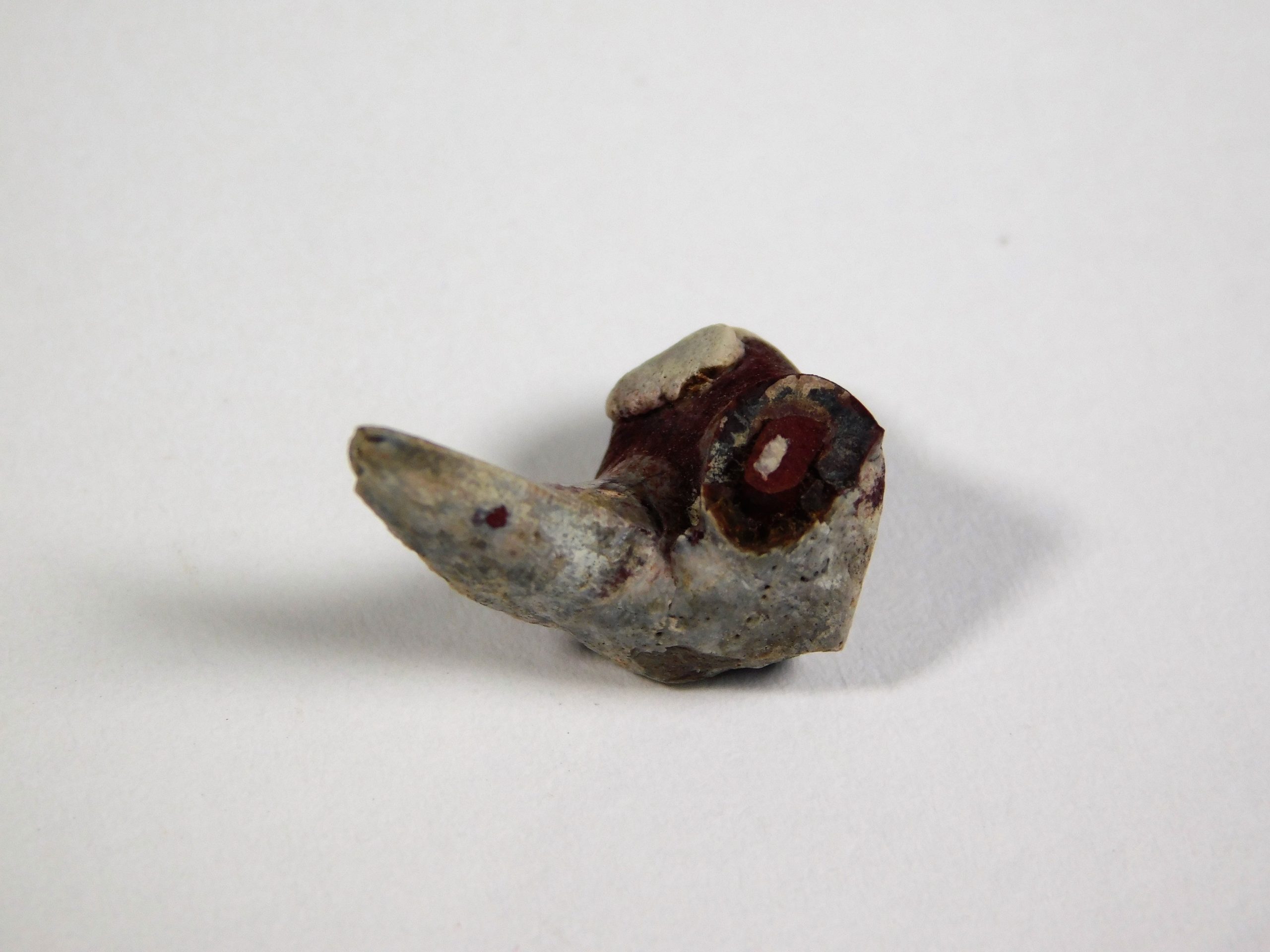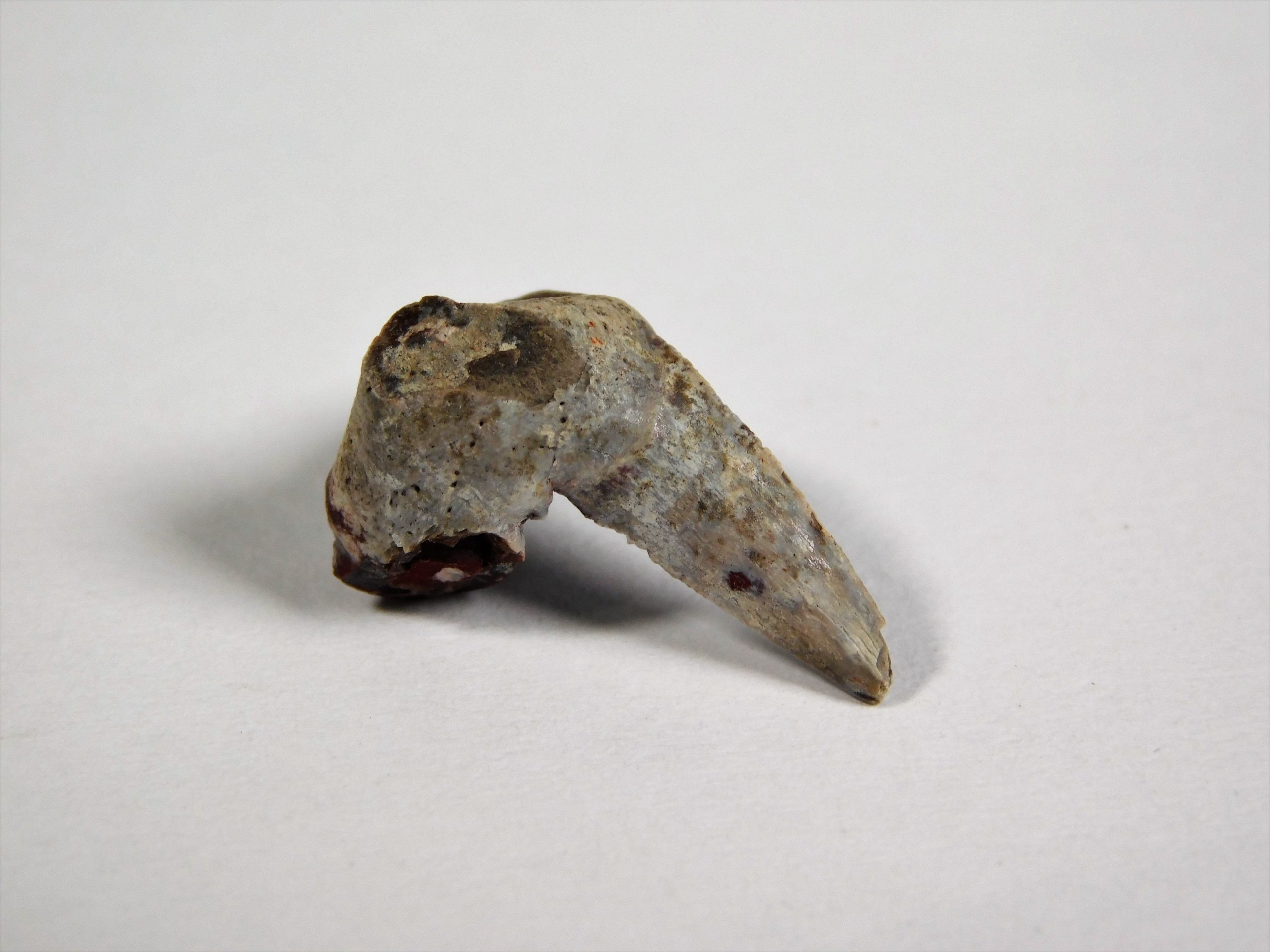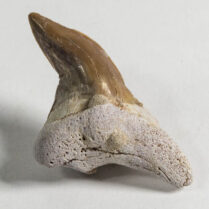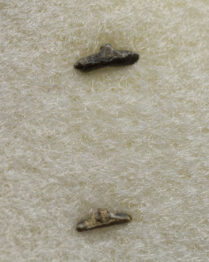Description
Xenacanthus sp
Shark
Early Permian
Arroyo Formation
Haskell County, Texas, USA
Xenacanth shark tooth. Missing one cusp. Cheap, great for study. Avg. 0.7 inch.
Xenacanthus is an extinct but especially long-lived shark genus known from the Late Devonian to Late Triassic. It is known mostly from isolated teeth and head spines from the Carboniferous of North America but also by skeletons from the Early Permian of Germany. It didn’t follow what we would consider the classic torpedo-like body shape of a shark. It was more eel-like and didn’t have the fork-like, heterocercal tail we associate with sharks today.
Xenacanthus fossils are found almost always in freshwater deposits. Its teeth have been collected in the same Early Permian layers as Dimetrodon and those teeth can be in the same size range so it was among the most formidable predators of that time.
Xenacanthus managed to survive the end-Permian extinction – one of the few shark groups that did. By the end of the Triassic only one small species in Texas was left to represent the lineage.

